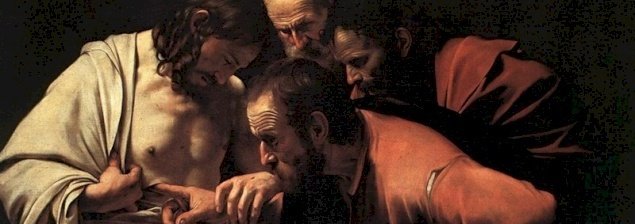Meditation of His Beatitude Patriarch Pierbattista Pizzaballa on the Second Sunday of Easter
Below you can find the meditation of His Beatitude Patriarch Pierbattista Pizzaballa, Latin Patriarch of Jerusalem, on the Second Sunday of Easter, Sunday 16 March 2023.
April 16, 2023
Second Sunday of Easter, Year A
(Jn 20 : 19-31)
In today’s Gospel passage we find the disciples locked in the Upper Room. The evangelist John underlines at least two times (Jn 20:19, 26) that the doors of the place where the disciples are located are locked. In verse 19, he also clarified the reason for this lockdown: fear.
The disciples, therefore, are afraid, and we know that fear causes lockdown, it locks.
But fear is not the only reason. There is another one: the disciples locked themselves in the Upper Room because they are not expecting anyone. After the death of Jesus, everything was over for them and there was nothing more to await. Somehow, they were closed in a sepulcher, just as Jesus had been some days earlier.
Right there, however, Jesus comes, He enters. We said on Palm Sunday that the style of God is to visit, to enter life, to bring new life. Here, the Risen Christ continues to visit, just as He had done countless times before His passion and death. And He visits even when persons no longer expect anything, when they think that nothing new can happen again. Then the Lord comes.
He visits His disciples, locked in the sepulcher of their fears and He re-establishes a relationship, He reopens a relationship that was interrupted. He does it, strangely, with the Apostle Thomas. We could say that the love of the Lord for His disciples knows different way and attentions, according to the need of each one. And since Thomas was absent at the first visit, and since he has trouble in believing, Jesus addressed him.
We underline two aspects of this encounter.
The first is what happens through the body: hands, feet, rib, wounds…
Just as before His Passion, Jesus usually encountered persons in the concreteness of their own bodies – touching and being touched, caressing and embracing – so to the unbelieving Thomas Jesus offers His own body to touch, to see, to love. Just as through His body He healed the wounds of sickness, so He heals the wounds of Thomas, his unbelief.
The second aspect pertains to the fact that Jesus invites Thomas to go beyond the physical element.
After Jesus showed His wounds and asked him to touch them, we are not told what gesture Thomas performs (John 20:27); a few verses earlier, in the encounter with Mary of Magdala, Jesus requests not to hold on to Him, don’t stop to touch (John 20:17). In both cases, it is a question of a new touching, of experiencing the encounter with Jesus differently in respect to what they were used to doing before the Pasch.
Jesus asks to begin with a renewed faith, capable of not stopping at His crucified body, of learning to touch the ecclesial and spiritual body of the Lord…
This meditation was originally published on the website of the Latin Patriarchate of Jerusalem. Please click here to read the full text.

